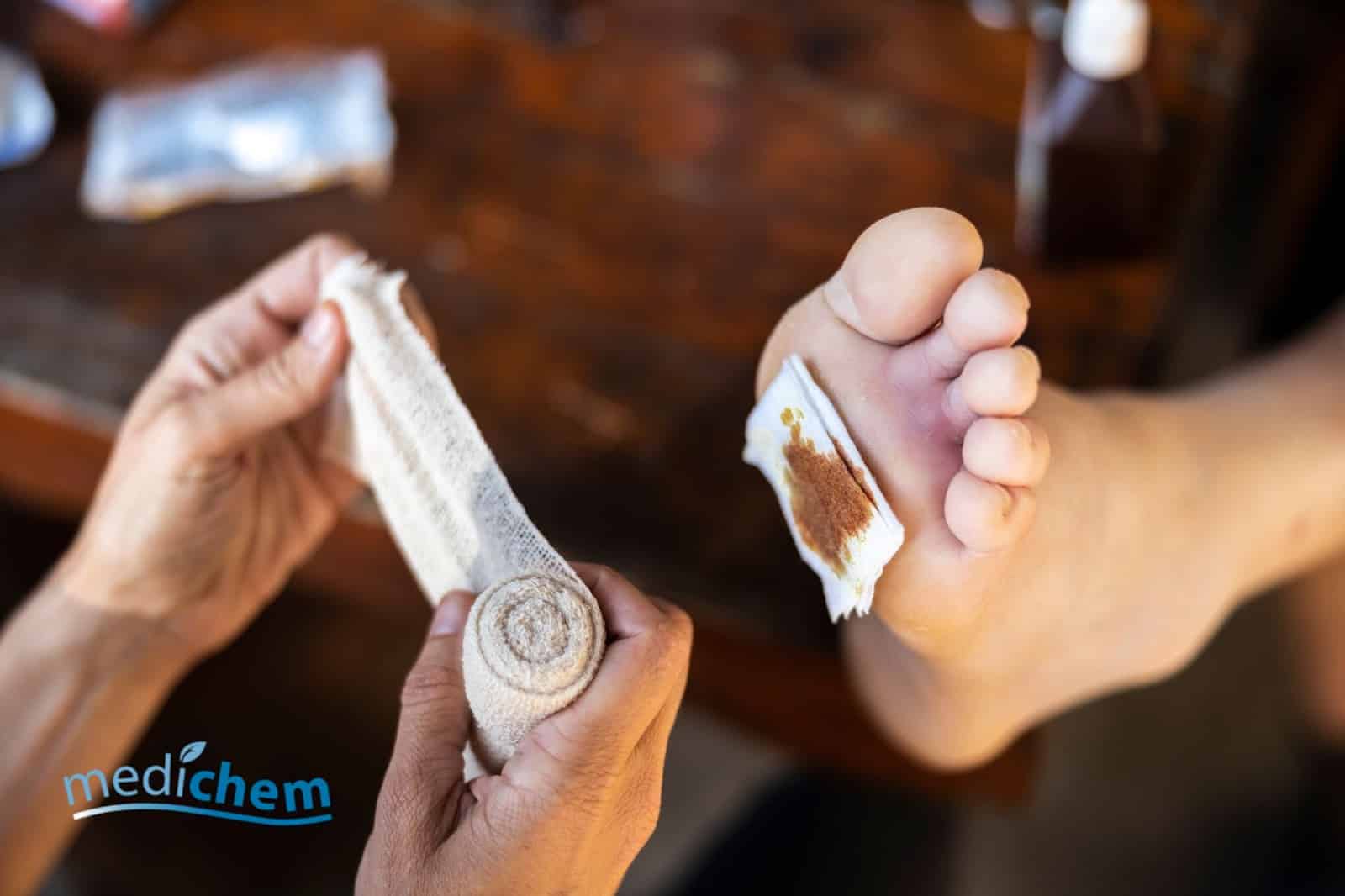Usually, a puncture wound doesn’t bleed much. Frequently, the wound appears to heal fairly immediately. However, this does not negate the need for treatment.
Because of the possibility of infection, puncture wounds, such as those caused by stepping on a nail or being pricked by a tack, can be harmful. Tetanus or other bacterial spores might be present on the object that caused the wound, particularly if it was in contact with soil. Domestic dogs and cats’ and other animals’ bites can cause puncture wounds that are particularly vulnerable to infection. Foot puncture wounds are also more prone to developing an infection.
If the injury was severe enough to cause constant bleeding, get medical treatment; otherwise, proceed as follows:
- Reduce the bleeding, minor wounds like cuts and scratches typically heal on their own. If they don’t, gently push with a bandage or clean cloth. Seek emergency treatment if bleeding continues, spurts, or flows even after several minutes of pressure.
- Rinse the wound by using clear water. To remove tiny, surface-level particles, use tweezers that have been cleaned with alcohol. Consult your doctor if bigger debris is still present and is more firmly entrenched in the incision. Tetanus risk is reduced by thorough wound cleansing. Apply soap and a fresh washcloth to the area around the wound to clean it.
- Apply an antibiotic to assist keep the area moist after cleaning the wound, smear a little amount of an antibiotic cream on top. Although these items don’t hasten wound healing, they can prevent infection and help your body repair the wound more effectively. Certain persons may have a minor rash as a result of certain components in some antibiotic creams.
- Bandage the wound. Air exposure speeds up the healing process, but bandages can keep the site clean and prevent the growth of dangerous germs.
- Regular dressing replacement Do this at least once every day or anytime it gets soiled or filthy. Choose adhesive-free dressings, sterile gauze, or hypoallergenic paper tape instead if you have an allergy to the adhesive found in ordinary bandages.
- Watch for signs of infection and see your doctor if:
- The wound doesn’t heal or if you notice any redness, drainage, warmth or swelling.
- If the puncture is deep, is in your foot, is contaminated or is the result of an animal or human bite, see your doctor. He or she will evaluate the wound, clean it and, if necessary, close it. If you haven’t had a tetanus shot within five years, your doctor may recommend a booster within 48 hours of the injury.
- If an animal — especially a stray dog or a wild animal — inflicted the wound, you may have been exposed to rabies. Your doctor may give you antibiotics and suggest initiation of a rabies vaccination series. Report such incidents to county public health officials. If possible, the animal should be confined for 10 days of observation by a veterinarian.
Change the bandage 1 to 2 times every day until your wound heals. Do not swim or soak your wound in water until it has healed. Ask your doctor or nurse if you have any questions. Each time you change the bandage, look at your skin to check for signs of infection.
Keep the wound dry for the first 24 to 48 hours. After this, you can shower if your doctor says it’s okay. Pat the wound dry. Don’t soak the wound, such as in a bathtub.
The key points when applying a bandage are:
- make sure the injured person is comfortable and tell them what you’re doing.
- work from the side of the injury to avoid leaning over the wound
- support the injury in position.
- use the right size bandage – different parts of the body need different widths of bandage.
- avoid covering fingers or toes when bandaging a limb so you can easily check the circulation.
- apply the bandage firmly, but not tightly, and secure the end by folding it over and tying a knot in the end. You can also use a safety pin, tape or a bandage clip.
In conclusion, when someone has a puncture wound they should always get medical attention. To assist the healing process of the wound follow the six steps, if the bleeding is constant contact emergency services. At MediChem we have bandages, wound wipes and dressings to reduce the bleeding of a puncture wound. It is recommended that every business has at least one fully equipped first aid kit.


